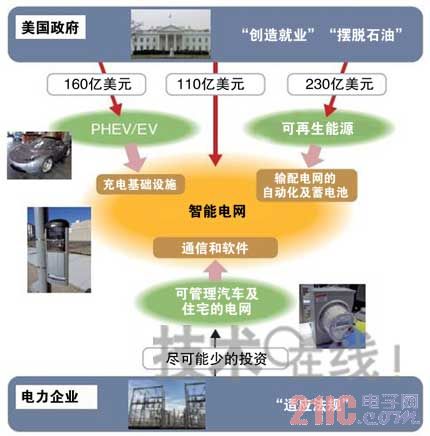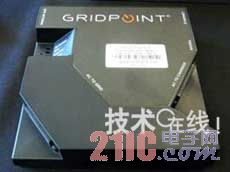It is the Obama administration of the United States that is the flag-bearer for the development of charging infrastructure around the world. For the Obama administration, building a charging infrastructure to create a hybrid electric vehicle (PHEV) and electric vehicle (EV) industry is an indispensable policy. The reason is that the PHEV/EV industry has an important relationship with the “creation of employment†related to the fate of the government and the “freedom of oil†from energy security.
This article refers to the address: http://
The US government has decided to invest $11 billion in funding to build a smart grid. The Secretary of the US Department of Energy (DOE), Steven Chu, who is responsible for policy making, pointed out the importance of PHEV/EV: "It can reduce dependence on other countries' oil, reduce consumer spending, and lead in cutting-edge automotive development and production technology. Globally, and guarantee a high level of employment." For the charging infrastructure that is indispensable for realizing the policy, Zhu said: "The development of the power grid to a high level is an indispensable condition."
In addition, the construction of smart grids will promote the introduction of renewable energy such as solar power and wind power. Because the smart grid can be used to smooth the weatherable renewable energy. The introduction of these renewable energy sources is also indispensable for “creating employment†and “getting rid of oilâ€. The ultimate goal of the smart grid envisioned by the US government is the investment in equipment required for PHEV/EV penetration and renewable energy introduction. Moreover, PHEV/EV and renewable energy are recognized as “markets that will expand rapidly in the world in the future†(US Department of Energy Assistant Hank Kenchington). The development of charging infrastructure is the basis for this development, and there is currently no reason for the United States to take no action.

Figure: The US is targeting smart grids based on charging infrastructure (click to enlarge)
Driven by the Obama administration, many American companies have begun to work on the development of charging infrastructure. Among the most prominent are emerging companies. As mentioned in the previous section, the reason is that the industrial structure of the charging infrastructure has a similar structure to the IT industry that emerging companies are easy to get involved with.
Selling to power companies
The US power industry also reflects the structure of emerging businesses that are easy to conduct business. The reason is that there are more than 3,000 US power companies. These companies are likely to introduce power information management systems that consider charging infrastructure in the future. There is a lot of room for emerging companies to sell to power companies. Therefore, emerging companies say that by introducing their charging management system, power companies can reduce equipment investment.
As one of the emerging companies, Better Place, which is setting up a charging station in Israel and Nissan, said: “If you introduce 2 million EVs, you need to add 2,345 MW of power generation equipment. To implement these equipments, you need to set 1 Power transmission substation, 10 power distribution substations, 18 transformers and 2158km wire. The investment amount is estimated to reach 4.586 billion US dollars. With our company's charging control system, only 287km of wire can be added, an additional 400 million A $71 million investment is enough" (Better Place North America Vice President Jason Wolf).
Among the few emerging companies committed to charging infrastructure, one of the most popular companies is GridPoint. The company not only targets the business for power companies, but also targets major companies in the automotive and home appliance industries, and aims to become a power company.
GridPoint is characterized by strong financial strength. With the support of Goldman Sachs, one of the world's leading investment companies, it raised nearly 22 billion yen in funds and quickly acquired and cooperated with companies with the required technology. Currently, it is co-developing with 12 power companies. In the past two years, it has signed acquisition agreements with two companies and has established partnerships with 10 companies. With strong financial strength and cooperation with power companies, the company's development of power information management systems for charging infrastructure has entered a basic stage of completion.

"VCM" developed by GridPoint
GridPoint has been implementing a project called "SmartGrid City" from Boulder, Colorado, and large power company Xcel Energy since 2008. Equipment engineering has been completed and the current focus has shifted to verification. “The developed system is ready for use by other power companies†(GridPoint Product Manager Seth Bridges).
GridPoint is also developing charge control technology for PHEV/EV. To charge a PHEV/EV in a region operated by GridPoint, you need to use a device that provides information to the company. Therefore, the company developed the vehicle charging control device "VCM (Vehicle Control Module)". With VCM, remote control can be implemented by the company's services for managing EV/PHEV charging time and charge. In order to realize the charging control, the device collects information such as the state of charge of the vehicle battery, the position information of the vehicle, and the distance traveled. At present, 300 modified "Prius" equipped with lithium ion rechargeable batteries manufactured by A123 Systems of the United States have been used to carry out experiments on VCM.
The goal is not only the car, but also the home appliance
GridPoint is also striving to apply this device to home appliance energy management in the home. Because at the point of the information collecting device, "VCM has the same properties as smart meters" (GridPoint's Bridges). In December 2009, the company jointly developed HEMS software with Control4, a US-based HEMS (Home Energy Management System). Experiments with Xcel have begun. The goal is to "provide PHEV/EV and energy management in the home on the same platform in the future" (Bridges).
In addition, GridPoint will also look to the future. This is the "Vehicle to Grid (V2G)". V2G refers to the concept of operating a power grid not only by charging a battery of a PHEV/EV but also by discharging it. By making full use of this power, it is possible to promote the introduction of renewable energy sources that are unstable in power generation. Currently, GridPoint is developing V2G software. Using this software, it is possible to collect vehicle battery information within the jurisdiction of a power company and calculate the current and future generation and power loads. The goal is to charge and discharge the vehicle battery based on fluctuations in the amount of power generated by unstable renewable energy sources. This is equivalent to playing the same role as power companies. The goal of GridPoint is here. (To be continued, reporter: Shimizu Naoki)
Aluminum Electrolytic Capacitors
Aluminum Electrolytic Capacitors
Aluminum Electrolytic Capacitors
YANGZHOU POSITIONING TECH CO., LTD , https://www.yzpstcc.com